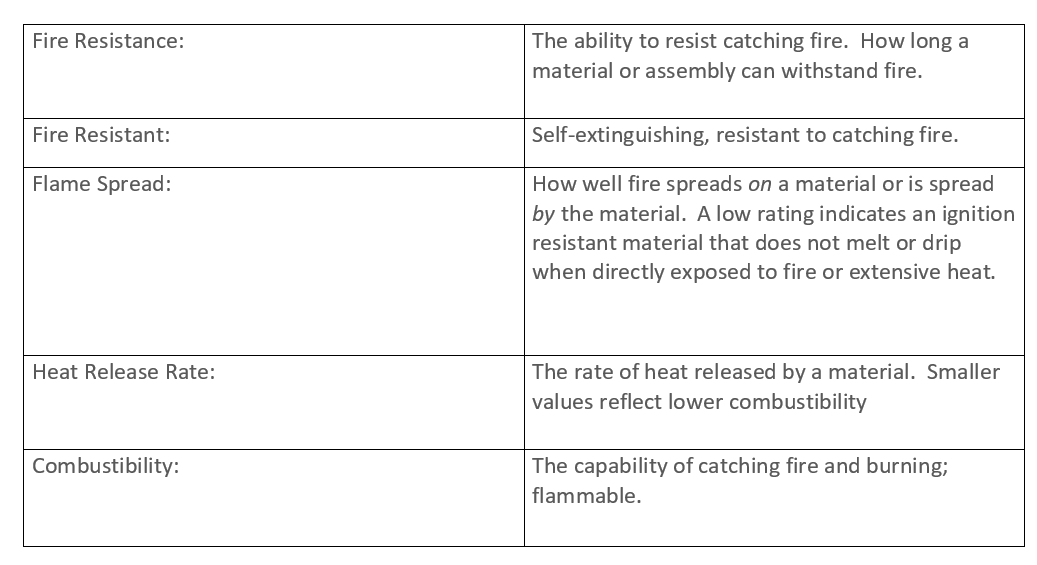FIRE
In addition to preventing heat loss, keeping material surfaces above the dew point and having sufficient strength to maintain the integrity of a structural connection, thermal breaks should also be specified on the basis that they are resistant to fire & burning.
Many thermal break solutions or materials are combustible or contain combustible components. Fire resistance and flame spread are two important characteristics of combustible materials used in buildings. The flammability and subsequent heat release of a material can increase the rate of a fire hazard as well as a fire’s intensity and duration.
Building codes and standards use the following terms to evaluate the differences between combustible materials relative to one another.
Non-combustible materials do not aid combustion or add appreciable heat to a fire; however, combustible materials used in or as thermal breaks should show fire resistance compliance if they are located within a fire-resistance-rated assembly.
Is a fire rating applicable per local building code? Sufficient data should be made available to the building official to show that the required fire resistance rating is not reduced as a result of incorporating a thermal break into the building enclosure. Fire ratings of assemblies may be required per ASTM E119 or NFPA 285 testing depending on the building type and fire code.
The fire properties listed in the table above provide a better understanding of how a material will react in a real fire situation. Each of the characteristics provide different information. They do not include all of the factors required for fire-hazard or fire-risk assessment of materials, products, or assemblies under actual fire conditions. The overall hazard of the thermal break product should be assessed using a combination of tests or data that is appropriate for the end-use application.


